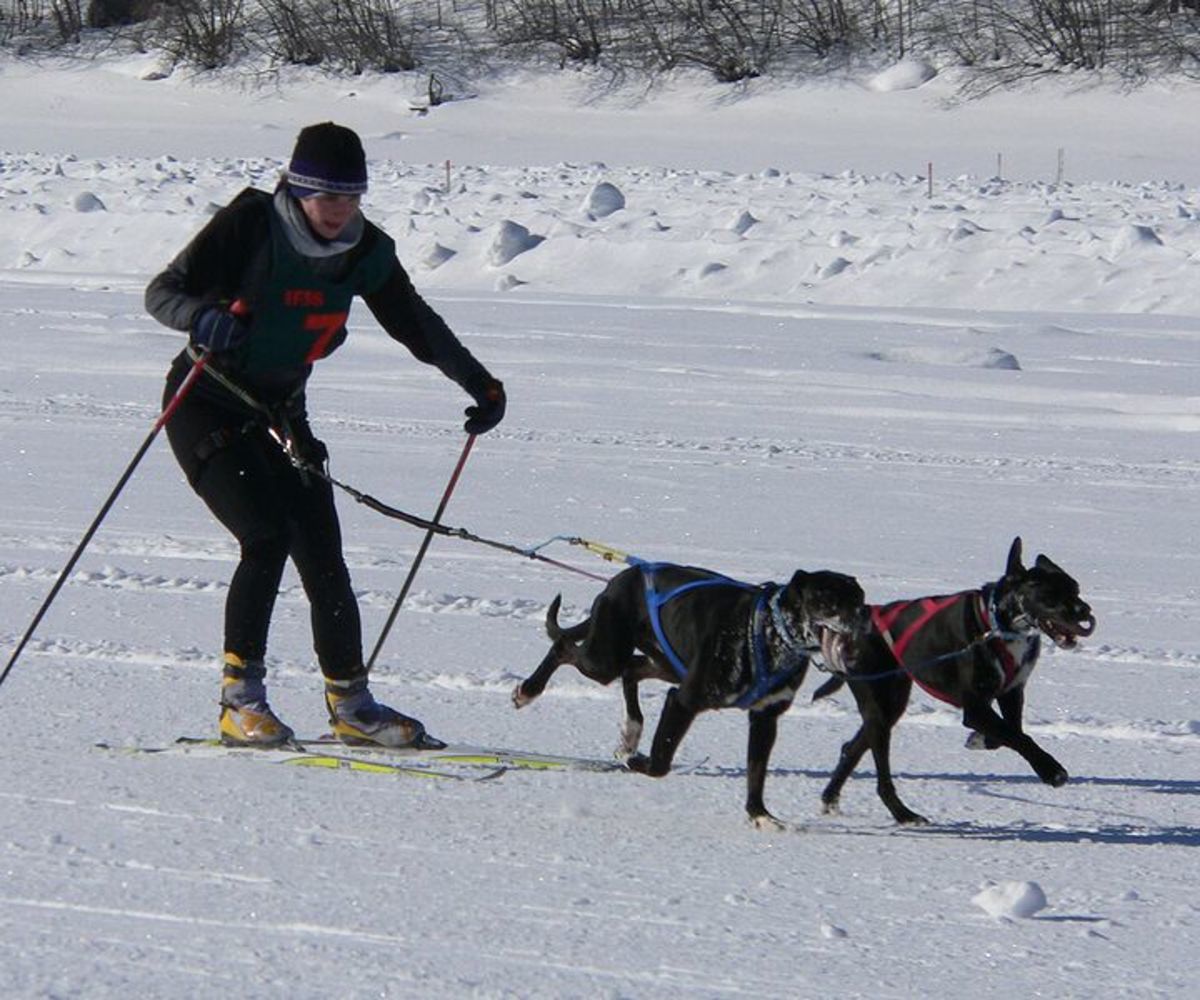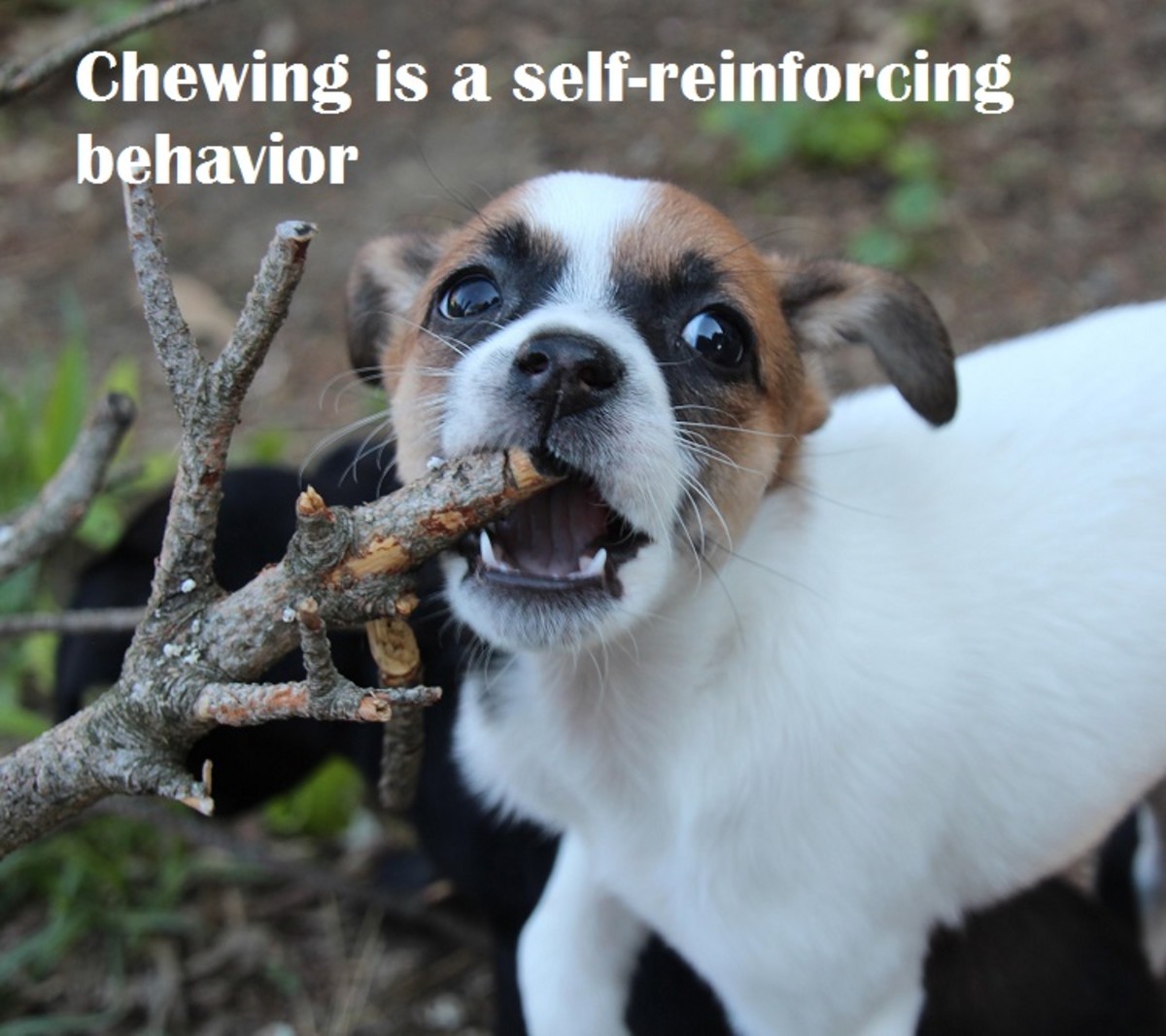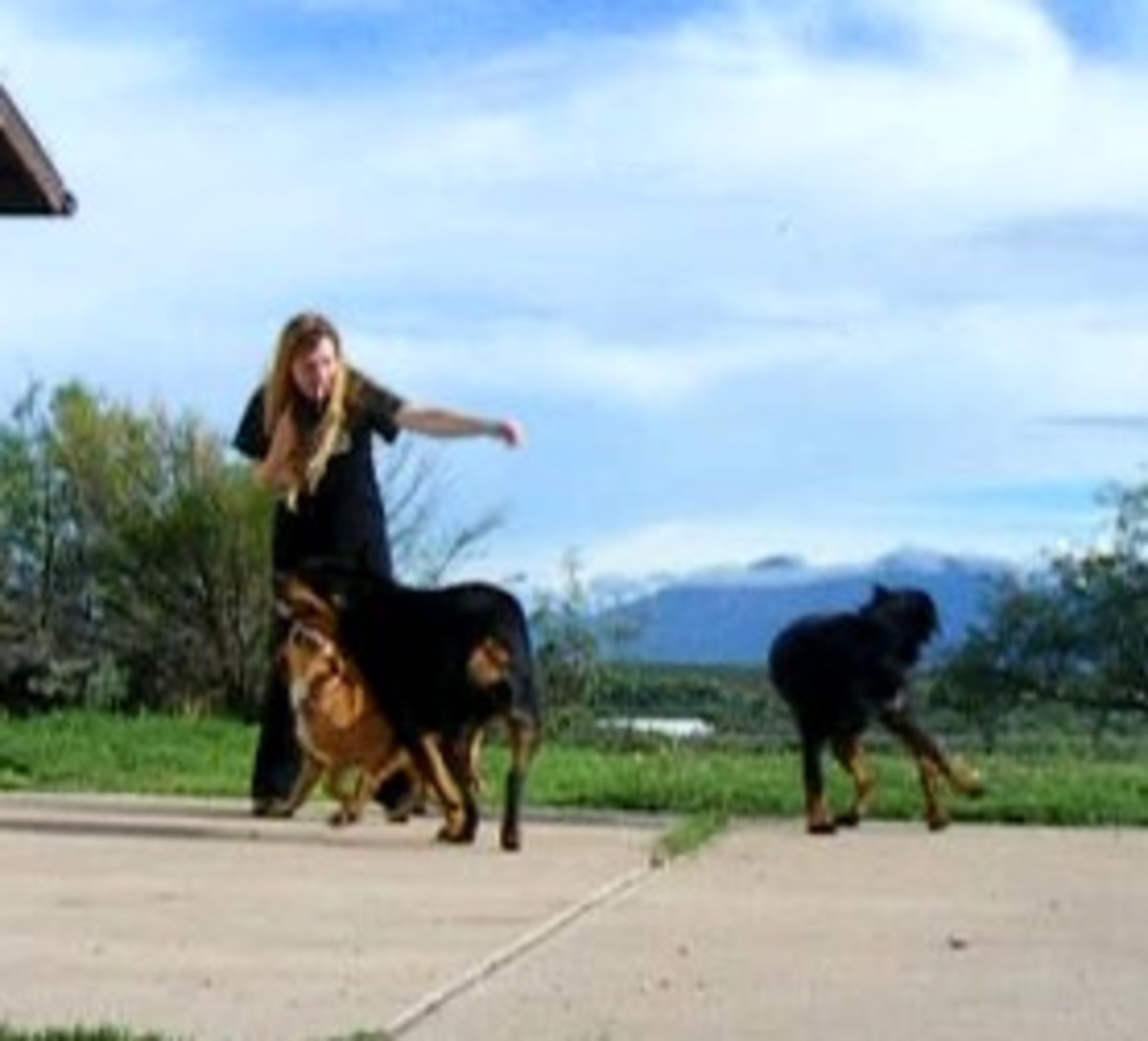Choosing the Best Dog Muzzle For Any Situation
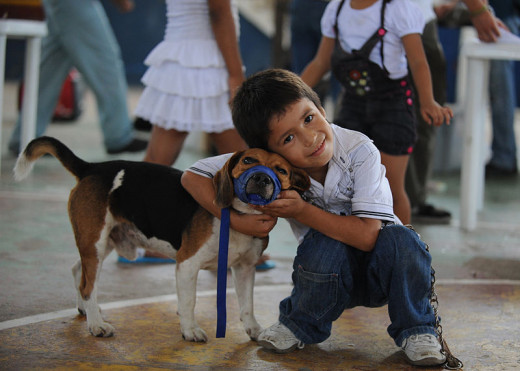
Reasons for Using a Muzzle
Many people are hesitant to use muzzles, partly because many people do not realize that their dog might need one, but more often because of the stigma that is associated with any dog who wears a muzzle, evoking such images as Anthony Hopkins' chilling portrayal of a muzzled Hannibal Lector in The Silence of the Lambs. Such an association can be difficult to maneuver around, since no one wants other people to think that their dog is violent, especially when you know that your dog can be very sweet, friendly, and well-behaved.
But in reality there are any number of reasons why a dog might need to wear a muzzle. Aggression is often the first that comes to mind, but fear can be another, especially if a dog has had a traumatic or painful experience earlier in life. Negative associations often breed negative reactions, and in this way undesired behavior can reinforce itself over and over again. Breed-Specific Legislation (BSL) often requires certain species or sizes of dogs to wear muzzles regardless of temperament. Likewise, visiting certain countries may require you to muzzle your dog, and some veterinarians and groomers require that dogs be muzzled to prevent any potential altercations with technicians or other animals.
Just as there are different reasons for using a muzzle, and different types of aggression, with different triggers and means of avoiding aggressive outbursts, there are also different kinds of muzzles which can be used effectively for each circumstance.
This is a list of the different types of canine muzzles, and when each should be used - and more importantly, avoided. Remember, safety first, for both you and your dog!
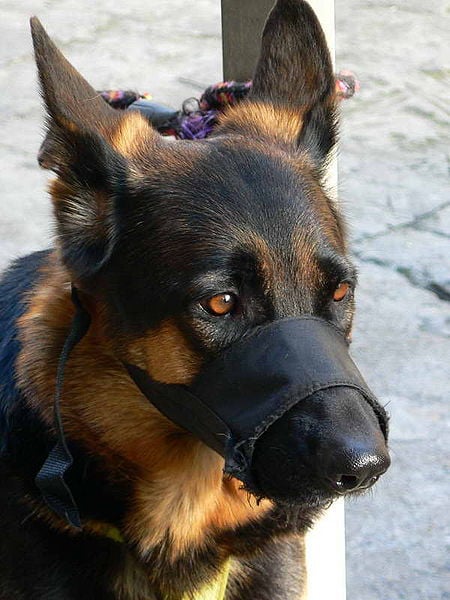
Fabric Muzzles
Fabric muzzles (usually mesh, nylon, or in some cases, cotton) are the most commonly seen type of muzzles, and the ones you are most likely to encounter in a pet store or in a veterinary office.
Fabric muzzles are a stop-gap. That is, fabric muzzles are not meant to for long-term use. The main reason for this is two-fold: first, they are relatively flimsy, and so will not stop a very aggressive dog, and as a result will also not last very long with extensive use.
Second, fabric muzzles, especially the type that taper to a point at the end of the snout and only have a single hole at the end will prevent a dog from panting. Since panting is a dog's primary means of cooling down, anything that impedes a dog's ability to pant can cause the dog to overheat, which can cause serious, sometimes fatal complications.
Many people also do not consider that a dog's whiskers will be bent in many fabric muzzles, which can cause discomfort such as mild irritation or itchiness, especially if your dog has particularly prominent or thick whiskers.
These are passable for occasional use, such as if your dog has fear or aggression issues at the vet's or groomer's. However, if your dog is particularly strong, or particularly aggressive, the thin fabric will not do much to prevent your dog from harming either an attendant, another animal, or itself.
Also, and I cannot stress this enough, these types of muzzles are NOT meant for use when exercising your dog, or for any environment where your dog might overheat. For this reason, there are better options available.
A cheap option for the occasional veterinary visit, but not recommended for exercise or daily use
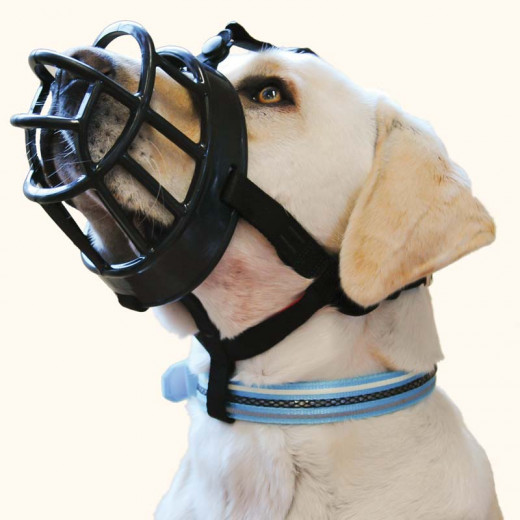
Plastic and Rubber Basket Muzzles
A basket muzzle is a type of muzzle that covers most of the dog's snout, but unlike the fabric or mesh muzzles, basket muzzles allow the dog to pant. While basket muzzles are far sturdier than fabric muzzles, there is much more airflow due to well-placed, well-spaced holes and bars. These allow the dog to pant, as well as drink water and even take treats.
As such, basket muzzles are excellent for everyday use, for taking your dog for a walk, of for use in warmer environments. These are probably the best type of muzzle available.
As a side note, some plastic muzzles are nearly fully-enclosed. While this does mean that they appear more durable and secure, these enclosed muzzles do also restrict breathing more than the bar-based basked muzzles. Baskerville makes some excellent flexible rubber basket muzzles, and are one of the more recognizable and respected of muzzle brands.
A similar type of muzzle is known as the Italian muzzle. Generally, these a longer and more tapered than the usual basket muzzles with smaller holes between the bars. These still allow a great deal of airflow, but do not allow for most treats to pass through, and sometimes drinking water can be more difficult as well.
A great option - excellent airflow, and your dog can eat treats and drink water
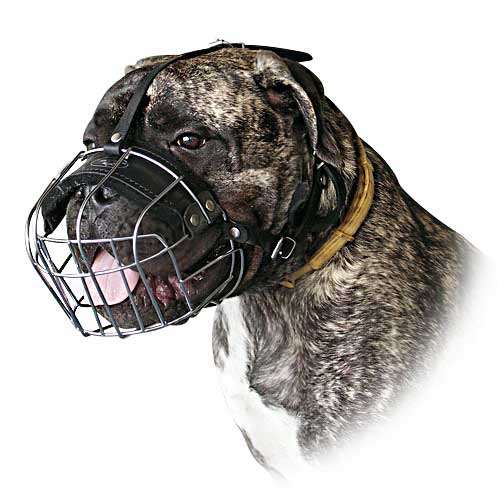
Wire Basket Muzzles
Last on the list are wire basket muzzles. Much like the plastic or rubber basket muzzles, wire basket muzzles are great for everyday use. Even more than the other basket muzzles, wire basket muzzles provide even greater air flow due to larger spaces between the wires while remaining even more sturdy because of the metal construction.
These are the most durable of muzzles, and are great for exercising your dog with. If you are a runner and your dog requires a muzzle, this may well be your best bet. The only drawback is that the metal, if exposed to the sun for a long time, can heat up, and if not properly set on the dog's snout, may cause some harm. Similarly, in cold temperatures, there is the potential for freezing or damage due to extended contact with the cold bars. For this reason, the rubber basket muzzles are likely superior. However, some wire basket muzzles do also have a padded (sometimes leather) to prevent the top of the dog's snout from touching the wires and help to hold the muzzle in place by resting it on the top of the snout. Like the other basket muzzles, wire basket muzzles are still a good choice if care is taken to size and secure them properly, and if used with an awareness of weather conditions.
Great airflow and very durable, and made in a number of sizes
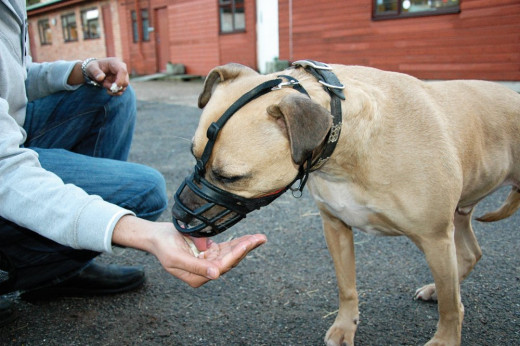
Introducing a Muzzle to your Dog
If your dog has never worn a muzzle before, it is important that you introduce it properly, otherwise the muzzle can potentially cause more behavioral problems.
Use treats to lure the dog's snout into the muzzle, and be sure to praise and reward your canine when they fully insert their snout. Go slowly. If the dog is hesitant, let it become comfortable with the muzzle. Never try to force it onto the dog, as the dog can develop negative associations of the muzzle. For this reason, it is always best to introduce the muzzle in a calm, quiet place where your dog feels comfortable. The fewer distractions and potential sources of anxiety will allow the dog to come to associate the muzzle not with aggression, fear, or pain, but with praise and rewards. The whole point of a muzzle is to mitigate any potential conflict; by reducing a dog's stress levels with the muzzle, you are that much closer to training your dog to be calmer and more receptive to commands, and eventually, with consistent training, to correct undesirable behavior altogether.
In all but the most extreme cases, most behavior can be reduced if not outright eliminated. A muzzle can help you along the way, but should never be considered a replacement for the consistent exercise and training that all dogs require.
Remember: a muzzle will only reduce a dog's ability to bite; it does not stop aggressive behavior as a whole. Only consistent training and a thorough understanding of what is triggering your dog's aggression will help to reduce and eliminate undesirable behaviour.
Sizing a Muzzle
Always ensure that you properly size your muzzle to fit your dog snugly and securely. Test out a few different brands - most have different sizes of basket, and different sets of straps: behind the ears and between the ears being the two most common strap types. Ensure that it sits comfortably but snugly on your dog's snout, and that the straps can be secured and adjusted as necessary. Also, keep in mind that while many muzzle companies create a number of different sizes, there is no one-size-fits-all mentality with muzzles. All dogs are different, and even within a single breed there can be a great deal of variation in size and thickness of neck, snout, and even facial structure. Furthermore, some dogs (such as boxers, bulldogs, and other dogs with short, blunt, or thick snouts) will require more specific muzzles that should be far shorter than the typical muzzles to ensure the dog's comfort and the security of the muzzle itself.
Always you consult with the manufacturer for both sizing concerns as well as their particular instructions on how to measure your dog's face, snout, and neck to ensure that you get the best possible product and fit for your needs.
All dogs are different, and have different needs based on different situations - fear, aggression, injury, Breed Specific Legislation (BSL) can all require occasional or everyday use of muzzles. You want the best for your canine companion, and for that reason always ensure that you research your specific needs and how you can best serve your pet's requirements.
Do you know of any other types of muzzles, or have you had any experience (good or bad) with a specific brand? Let us know in the comments below!




